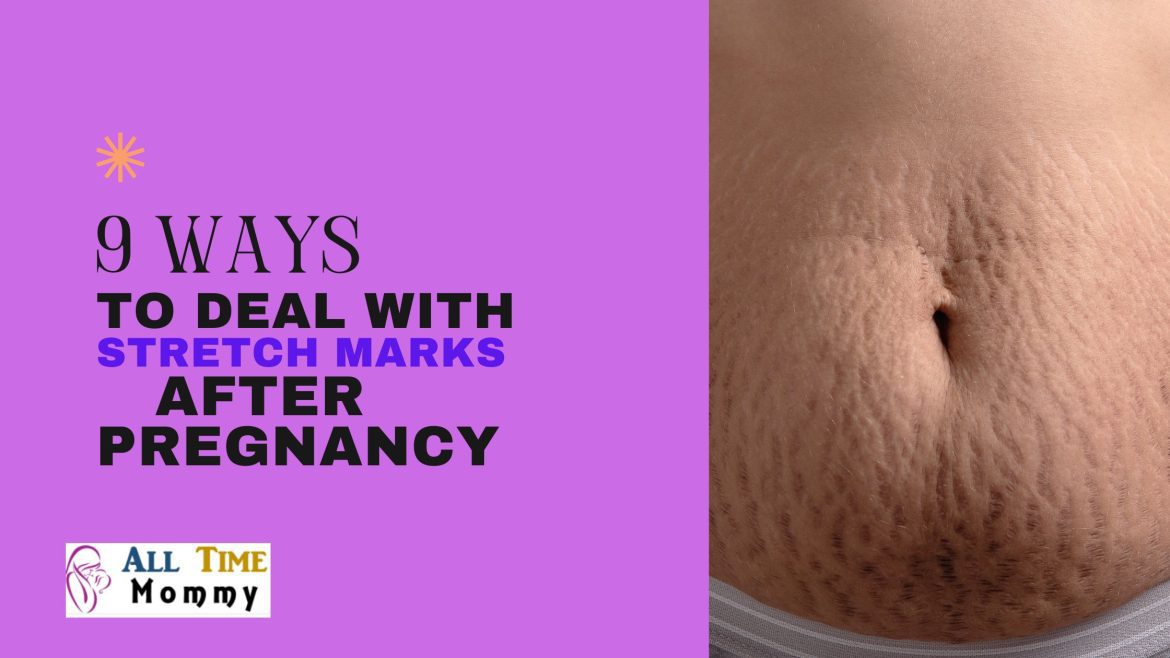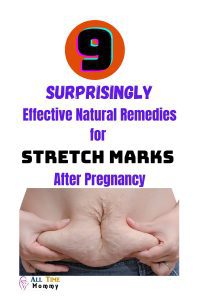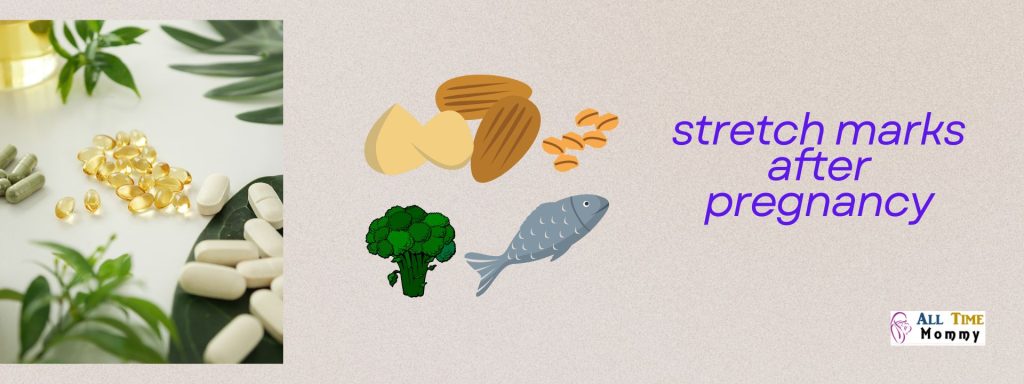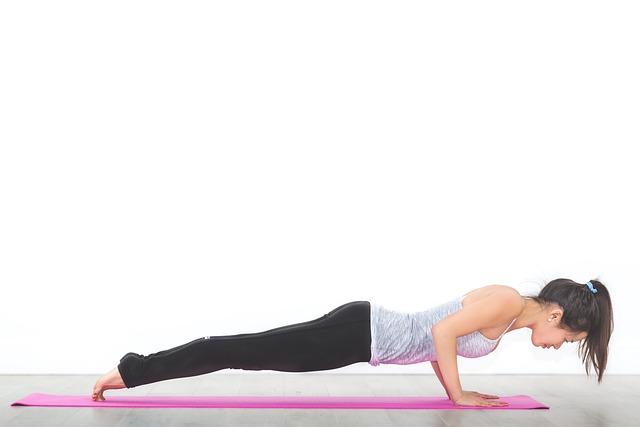Pregnancy is a beautiful journey. But it can leave its mark on your body like stretch marks after pregnancy.
As a new mother, you likely have encountered pregnancy stretch marks that extend in the weeks and months following childbirth.
These marks are usually the result of the rapid stretching of the skin as the body expands to accommodate the growing baby.
While they are often not painful, they can be unsightly and inconvenient. Fortunately, there are many ways to reduce the appearance of stretch marks after pregnancy.
This blog post will discuss some effective methods to help you remove stretch marks after pregnancy and feel more confident in your skin.
Whether you want to use natural remedies or seek professional treatments, we have you covered. Let’s dive in and explore how you can remove stretch marks after pregnancy!
Understanding Skin Changes During Pregnancy
While pregnancy may bring about glowing skin, rosy cheeks, and long hair, you may also experience scary skin changes at times.
Most women lament having acne, spider veins, dark spots, enlarged noses, and stretch marks.
But just for a season.
Most of these skin issues normally go away after delivery. However, some like stretch marks may persist for months or years.
Pregnancy stretch marks may happen due to the rapid growth of your bump and stretching of the skin to pave the way for a growing baby. Also, hormonal changes in your body may play a significant part in pregnancy stretchmarks.
Affiliate Disclosure: As an Amazon Associate, I get a small commission for purchases made from Amazon.com through links in this post. Learn more about our affiliate disclaimer here.
How to Remove Stretch Marks After Pregnancy
1. Continue with a postnatal supplement
Postnatal supplements are more important, especially in your first six weeks after birth.
Your body’s nutritional demands are higher than usual during pregnancy and after delivery.
Why?
Because you must cater to your own needs plus that of your baby. Having a pre or postnatal supplement will help fill in the nutrition gaps during this time.
Most of these supplements are loaded with numerous vitamins to support your body’s healing process and enrich your breast milk for your baby’s development.
And not just that.
A postnatal supplement with omega-3 fatty acids, D, and C vitamins, together with zinc minerals will help boost your collagen production, which is crucial for your skin, hair, nails, and joints.
According to a study, low vitamin D levels may increase the risk of having stretch marks.
Similarly, Vitamin C plays a crucial role in collagen synthesis in your body.
That is why the basic of dealing with stretch marks after pregnancy is replenishing or boosting the essential vitamins directly related to collagen production.
2. Add in a collagen supplement for Stretch Marks After Pregnancy
Collagen is one of the crucial proteins in your body that form part of structural components and connective tissues.
It’s crucial in maintaining healthy skin, tendons, muscles, ligaments, and blood vessels.
And not just that.
Collagen is also essential for blood clotting, wound healing, and protecting the nervous system.
According to a study, collagen supplement is safe and nontoxic; you can take them daily. This study also suggests that taking collagen supplements for about 69 days may help increase skin elasticity, hydration, and dermal collagen density.
Do you want to give it a try?
Here are some forms of collagen supplements you may want to try.
- Hydrolyzed collagen. This is the most common form of collagen mostly derived from cattle, seafood, and poultry. Hydrolyzed collagen is easily broken down by your body into smaller, easier-to-absorb peptide particles. You will find hydrolyzed collagen either in capsule or powder form. You can add the powder to hot and cold beverages, soups, baked goods, or other foods.
- Undenatured collagen. This is often raw collagen; you can derive it from chicken skin, legs, or cartilage.
- Gelatin: This is cooked collagen, usually derived from animal sources.
Dosage
One study suggests that taking 2.5–15 grams of hydrolyzed collagen peptides daily may be safe and effective for joint pain, skin health, and hydration.
In fact, one piece of research points out that even a daily dose of 2.5 grams could benefit your skin elasticity.
Additionally, taking 10–40 mg of undenatured collagen daily may help improve joint health, which is equally recommended for a new mom.
3. Align your diet to your skin health needs
A healthy diet is crucial for reducing the visibility of stretch marks. Ensure you eat foods rich in omega-3, vitamins A, C, D, and E to help produce and synthesize collagen.
Zinc minerals are also essential in keeping your skin healthy.
Here are crucial food to include in your diet for stretch marks after pregnancy
Mega-3 oil
One clinical trial indicates that omega-3 oil can improve skin elasticity and moisture levels, thus reducing the visibility of stretch marks.
In fact, according to this trial, omega-3 oil may outperform your everyday cream when it comes to reducing stretch marks.
Do you want to give it a try?
Eat the following foods.
- oily fish like sardines, tuna, and salmon
- include seafood like oysters and shrimp
- fish liver oils, such as cod liver oil
- Egg white
Vegetable-based alternatives for omega-3 include:
- flaxseed oil
- chia seeds
- canola oil
- soybean oil
- walnuts
Take a clinically approved postnatal omega- 3 suppliment like this one.
Also, take bone broth soup. After you’ve given birth, do a 21-day bone broth soup challenge.
Get marrow and knuckle bones from nearby butchery. Also, pig bone and chicken legs, neck, and cartilage are equally effective.
Boil them for a very long time. In my father’s village, bones are cooked for almost a whole day. Simmering animal bones over heat for hours helps release incredibly nutritious compounds like collagen, hyaluronic acid, glucosamine, protein, and amino acids
The longer you cook, the more benefits you’ll gain, so I prefer doing it at home.
Foods like bone broth contain a bioavailable form of collagen your body can use immediately.
Similarly, you may get a Bone Broth Protein. This, too, is designed to deliver all the benefits your body needs to form healthy skin and joints.
Besides helping boost your collagen, bone broth is also an effective breast milk booster. That is why I recommend it to every breastfeeding mom.
Citrus fruits
Vitamin C is critical for collagen production. And the best way to get your natural vitamin C is through citrus fruits like oranges, grapefruit, lemons, berries, and limes.
Green tea
One study shows that Green tea may improve moisture retention in your skin. The catechins in green tea are antioxidants that can protect your skin against roughness, thus improving its hydration, thickness, and elasticity. For best results, please do not add milk to your green tea.
Leafy greens
Leafy greens like kale, spinach, and broccoli are also effective in fostering skin healing after childbirth. Be sure to get your dose daily.
For more nutritious collagen-dense foods, I recommend reading these posts here.
- 80% of Women Feel Relief From Pregnancy Stretch Marks with these 3 Natural Remedies
- How to Heal Vaginal Stitches Faster After Birth (Complete Checklist)
4. Ensure your skin remains moisturized and hydrated all the time
Skin hydration helps in retaining its elasticity. An elastic skin can stretch easily and reduce the severity of stretch mark during and after pregnancy.
Drinking about eight glasses of water daily can help maintain healthy and well-hydrated skin. Also, eat healthy fruits like water melon, avoid long hot showers, and get enough deep sleep.
Additionally, moisturize and massage your skin to maintain its elasticity.
Dry skin is prone to breaking, while well-moisturized skin can endure stretches, thus lowering the severity of stretch marks after pregnancy.
Virgin Coconut oil is among the best moisturizers for stretch marks. One research suggests that coconut oil can improve the skin barrier, reduce dryness, and promote wound healing.
Better still,you may get a good massage oil.
Be sure to gently apply the oil on your stretch marks and Massage for about 3 to five minutes daily.
Massage increases blood circulation, which helps your skin to receive nutrients faster and accelerates the healing process.
5. Regularly exfoliate to remove dead skin
Another way to reduce the appearance of stretch marks after pregnancy is through regular exfoliation.
The main reason for exfoliating and scrubbing is to remove dead skin and allow newer cells to grow. Exfoliating removes dead skin cells from the skin’s surface, promotes blood circulation, and improves oxygen supply to the area.
While exfoliating itself won’t remove stretch marks, it can help reduce its visibility by revealing the healthier layer of cells underneath.
What is the best scrubber for stretch marks?
Brown Sugar scrubs may be your best option for exfoliating stretch marks.
Why?
Because sugar contains glycolic acid, a chemical used in the beauty industry to exfoliate the skin.
Glycolic acid belongs to a group of acids experts called alpha hydroxy acids (AHAs). AHAs are popular ingredients in skin care products.
One study suggests that Glycolic acid can improve skin appearance by dissolving dead skin cells and oil.
It also boosts collagen production, supports skin moisture, and reduces wrinkles or signs of aging.
Unlike the synthetic Glycolic acid found in most beauty products, certain fruits like sugarcane and beets naturally possess this compound in their pure form.
That is a way using the Sugar scrub can drastically improve your stretch mark by boosting new and healthy cell production.
Properties of glycolic acid
Glycolic acid has the following properties:
- Exfoliative: glycolic acid can remove the outermost layer of skin cells and oil by dissolving them even without harsh scrubbing.
- Humectant: Glycolic acid tends to increase the synthesis of glycosaminoglycans, molecules that draw water into the skin, thus preventing skin dryness
- Antibacterial properties: some studies suggest that, at certain concentrations, glycolic acid contains antibacterial properties sufficient to inhibit the growth of bacteria.
- Anti-aging: can increase collagen and hyaluronic acid in your body, thus boosting your skin elasticity.
To make a sugar scrub for stretch marks after pregnancy:
Ingridients
- 1/2 midium sized cup of brown sugar
- 1/2 cup of natural oil like vigin coconut oil
How to make your sugar scrub
- Mix 1/2 cup sugar with a your natural oil like coconut oil a little at a time. until your scrub looks like wet beach sand.
- with a gently massage, rub the mixture over your stretch marks and allow it to settle for sometimes before rinsing off with warm water.
- Repeat atleast twice a week for effectiveness.
Alternatively, you may get an excellent ready-made brown sugar srub with natural oils here!
6. Apply Aloe vera gel for skin healing after Delivery
According to 2018 research, aloe vera contains skin-repairing properties that may benefit your stretch marks after pregnancy. Aloe vera is a plant that helps heal wounds by regenerating skin tissue.
Pure aloe vera gel is a good healing agent and can make skin smooth.
Besides, it contains glucomannan and gibberellin compounds, which increase collagen synthesis and fade stretch marks.
According to a study, acetylated glucomannan, acemannan, is the biologically active, dominant polysaccharide shown to increase collagen biosynthesis, probably through macrophage immune stimulation.
As such, applying the fresh gel from aloe vera leaf and gently massaging it onto the area with stretch marks can help reduce their appearance.
Please note that massaging is crucial for reducing stretch mark. In fact a study shows that a good massage can increase blood flow and stimulate fibroblast.
Fibroblast are among important body cells for collagen and elastin production, both of which may immensely help firm and tighten your skin. For better result you may enhance your massaging using a simple device like this one.
Try to leave on the gel for 20-30 minutes. Do it at least three times a week for better results.
7. Topical lotions and creams for stretchmarks after pregnancy
I like stretch mark lotions and creams’ because of their ability to insulate and lock moisture into the skin through deep moisturization.
Topical stretch mark lotions and creams are formulated with essential oils like cocoa butter, Argan oil, coconut oil, and almond oil.
These oils can promote skin hydration and help reduce the itching associated with stretch marks.
They also contain crucial skin elements like vitamins E, C, A, and glycolic acid to help reduce the visibility of stretch marks after pregnancy.
After you hydrate your skin, insulate it using stretch mark lotions and creams to help keep the skin moist and intact.
Apply these oils within three minutes of bathing to lock in moisture.
Also, avoid heavy products that can suffocate your pores by keeping out air and moisture.
Here is what you can look for in stretch mark creams and lotion.
- nut butter like cocoa, jojoba, or shea
- vitamins A, C, and E
- Hyaluronic acid
- Centella Asiatica or cica creams
- Collagen Peptides
- Aloe Vera
- Coconut oil rosehip and argan oil
If you want to try one of these creams, and lotions to fade stretch marks, be sure to:
- Use the product on fresh stretch marks. Mature stretch marks seem quite stubborn to eliminate compared to fresh ones.
- Take time to Massage the product into your stretch marks for effectiveness.
- Be consistent when using a specific stretch mark product. Apply the product every day for weeks.
When should I start using stretch mark lotion?
The best time to use stretch mark creams and lotions is early in your pregnancy. Once your belly bump starts expanding with a little itchiness, it is time to grab that lotion.
Please do not wait until you start noticing marks. Many creams work as a preventive measure.
Also, it’s easier to fade fresh stretch marks than older ones since the blood vessels still close and continuasely supply collagen around that area; no wonder the bright color.
Be sure to continue using the cream throughout your pregnancy and in a few months after childbirth.
8. Yoga stretches for stretch mark reduction after pregnancy
A good workout comprising aerobics or specific forms of yoga may also help speed up the fading of stretch marks after pregnancy.
Exercise helps to tear and strengthen the muscle allowing your skin to firm up and reduce the visibility of stretch marks.
Besides, yoga and aerobics immensely improve blood circulation and better oxygen utilization.
This enhanced blood circulation improves the absorption of nutrients, circulation of collagen to your skin, and cell repair and regeneration, which may result in stretch marks fading.
According to a specialist in this field, yoga pranayama is an effective way to improve skin elasticity.
Pranayama is an ancient controlled breathing technique that can boost oxygen and nutrient circulation in your body.
Additionally, doing a trikon group of asanas can help in skin toning.
Trikona means triangle. Try yoga poses that involve shaping your body in a triangle posture, like leaning sideways to touch the floor while keeping your feet grounded during the move.
Why don’t you get your yoga tools and accessories here for home workout. I promise you’ll love it!
9. Use a skin-firming cream to tighten the loose belly skin after pregnancy
Sometimes your stretchmarks may not be the primary triggers of your emotional stress but the loose skin left behind after childbirth.
Skin is made of collagen and elastin. As such, it expands with weight gain.
Once stretched, the skin may have trouble returning to its original shape.
Yes, mama, it can take ages before seeing any improvement on your skin.
Apart from doing regular cardio exercises to help burn fat and tone your muscles, applying an excellent skin-firming cream or lotion like this one may help increase the collagen and elastin in your skin.
Be sure to check on the ingredients, like collagen, and vitamin C, which are essential for skin recovery and firmness. Try out this one.
Related:
7 Best Postpartum Skin Firming Creams
How long does it take to remove stretch marks after pregnancy?
While most studies agree that using collagen supplements is safe and can increase skin elasticity, hydration, and dermal collagen density, they also note that its turnover is slow.
most studies suggest that it may take at least 8 weeks to experience noticeable results on your stretch marks.
In fact, some research eludes that it may take longer periods, like 12 to 15 months, to see results on collagen’s effects on skin health and joint pain relief,
Thus, it would help if you were patient and did not expect quick results.
Why do most women miss out on results?
- Inconsistency in body hydration and moisturization
- using products that do not promote skin health
- Gaining and losing weight rapidly
- Lack patience
How to remove stretch marks after pregnancy
- Boost your collagen by taking a supplement or eating a collagen diet-dense food to improve your skin elasticity.
- Exfoliate with brown sugar scrub at least twice a week to remove dead skin and encourage blood flow to those areas.
- Use stretch mark creams with hylouric acid to fade the visibility of stretch marks.
- Drink alot of water to Hydrate and moisturize your skin to improve its elasticity.
- Use tummy firming cream to reduce wrinkles that form due to skin. sugging after delivery.
- Do some yoga stretches to help in body relaxation and improve blood flow.
- Treat fresh stretch marks when they appear.
Takeaway
Pregnancy stretch marks are a common part of the postpartum journey for many mothers. While some women may be lucky enough to see their stretch marks diminish over time, others may want to take proactive steps to reduce their appearance. This article has outlined nine approaches to doing so, including lifestyle changes, home remedies, and skin care products.
Follow these simple tips and methodologies to eliminate stretch marks after pregnancy.
For additional questions or concerns about removing stretch marks after pregnancy, please leave a comment below and keep the conversation going.
DISCLAIMER The information contained in this post is for general information purposes only. I’m not a health practitioner and as such, this information should not be used as a substitute for consultation with your professional service provider.
Up next:
- 10 Common Health Issues You May Experience In Your First Six Weeks After Childbirth
- Natural Ways To Prepare Your Body For Labor in the Final Trimester
- 12 Things I Wish I knew Before Going Into Labor and Child Birth
- 15 Home Remedies To Help You Beat Postpartum Fatigue and Dizziness





